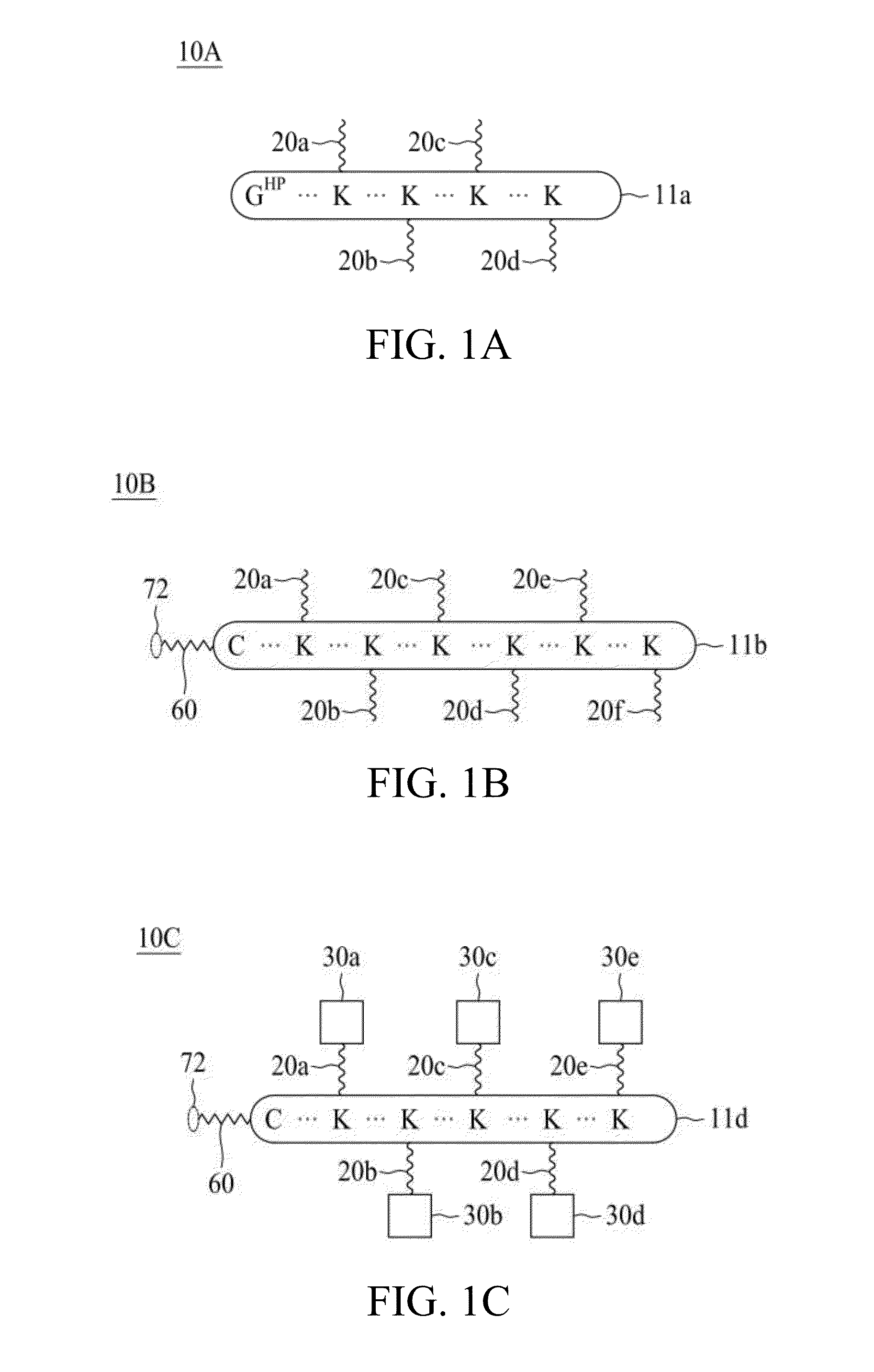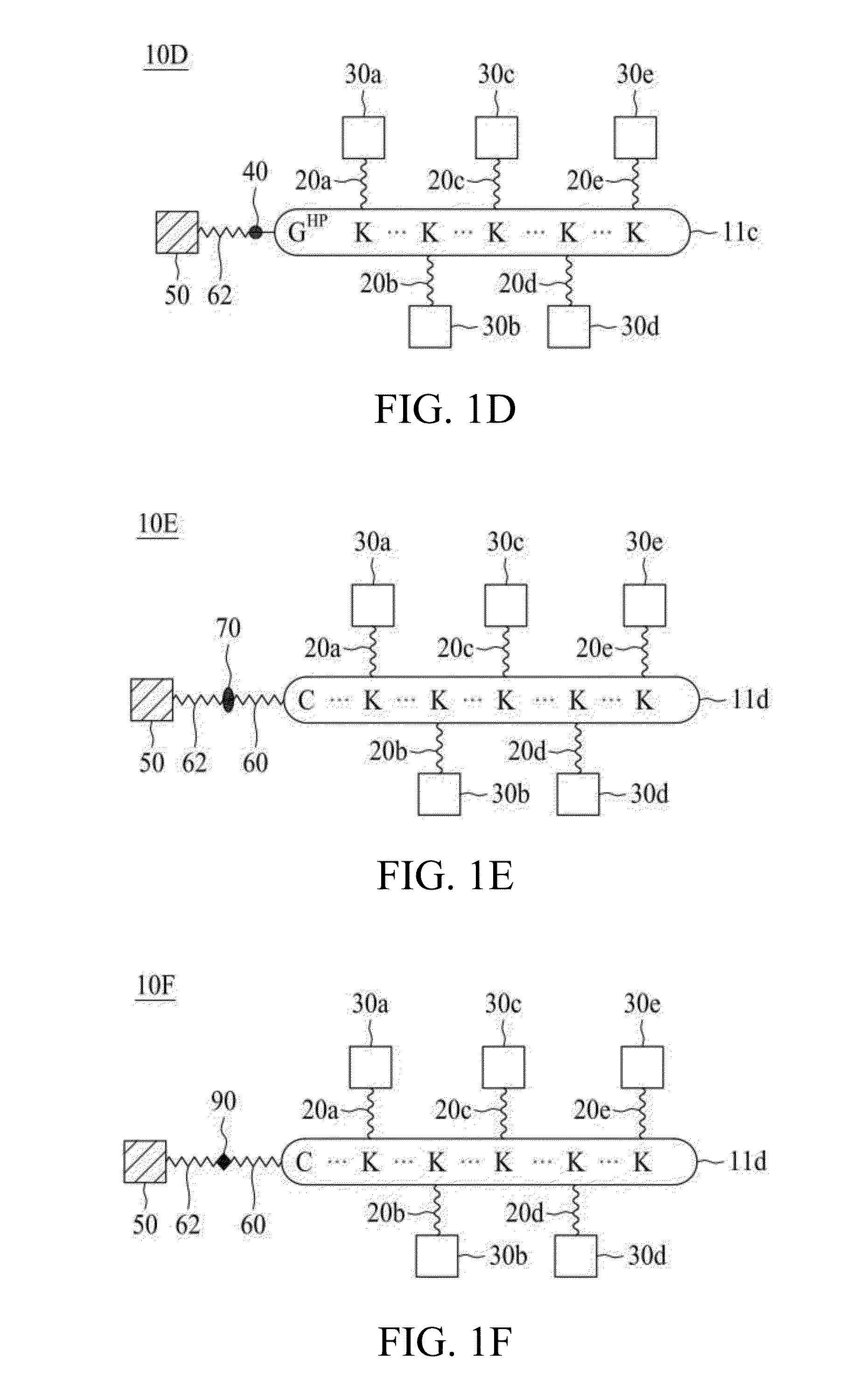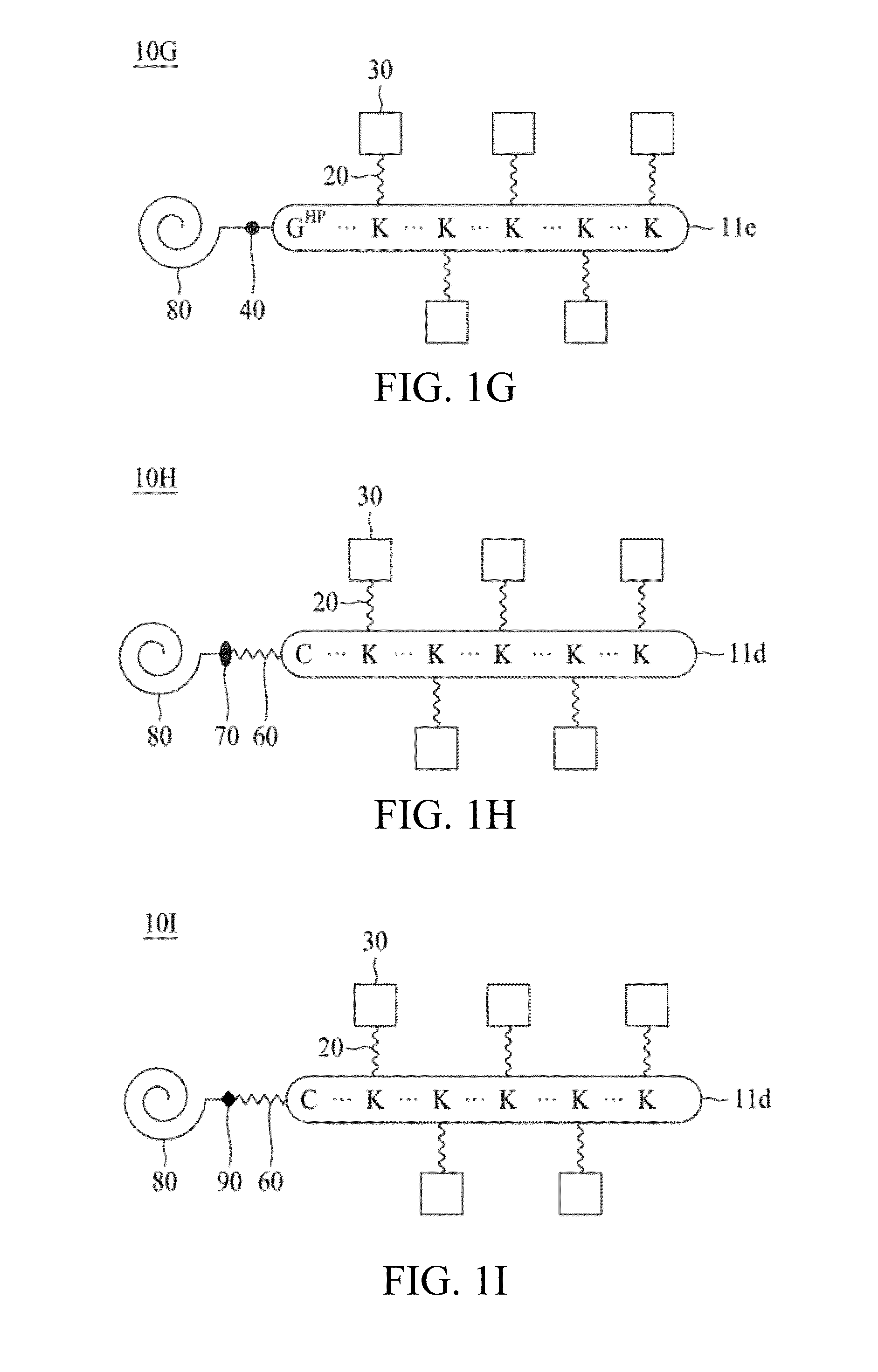Molecular constructs with targeting and effector moieties
a technology of effector moieties and molecular constructs, applied in the field of pharmaceuticals, can solve the problems of heterogeneous mixture, difficult to build molecular constructs, safety and efficacy problems, etc., and achieve the effect of facilitating the delivery of molecular constructs
- Summary
- Abstract
- Description
- Claims
- Application Information
AI Technical Summary
Benefits of technology
Problems solved by technology
Method used
Image
Examples
example 1
Synthesis of Peptide 1 (SEQ ID NO: 17), Peptide 2 (SEQ ID NO: 18), and Peptide 3 (SEQ ID NO: 19) as Peptide Cores, and Conjugation of SH Group of Cysteine Residue with Maleimide-PEG3-Transcyclooctene (TCO) as Conjugating Arm
[0514]Peptides 1 to 3 were synthesized by solid-phase peptide synthesis method and purified with reverse phase high-performance liquid chromatography (HPLC) using Shimadzu Nexera-i LC-2040C 3D HPLC system to 95% purity. The reverse phase HPLC used a Kromasil 100-5C18 column (250 mm×4.6 mm; 5 μm), with a mobile phase of acetonitrile and 0.1% trifluoroacetic acid, a linear gradient of 10% to 45% acetonitrile over 15 minutes, at a flow rate of 1.0 mL / min and a column temperature of 25° C.
[0515]The purified peptide was dissolved in 100 mM sodium phosphate buffer (pH 7.0) containing 50 mM NaCl and 5 mM EDTA at a final concentration of 2 mM. The dissolved peptide was reduced by 1 mM tris(2-carboxyethyl)phosphine (TCEP) at 25° C. for 2 hours. For conjugating the SH grou...
example 2
Synthesis of Peptides 1 and 2 as Peptide Cores, and Conjugation of SH Group of Cysteine Residue with Maleimide-PEG4-Tetrazine as Conjugating Arm
[0520]Peptides 1 and 2 were prepared as in Example 1, and then dissolved in 100 mM sodium phosphate buffer (pH 7.0) containing 50 mM NaCl and 5 mM EDTA at 2 mM final concentration. The dissolved peptide was reduced by 1 mM TCEP at 25° C. for 2 hours. For conjugating the SH group of cysteine residue with maleimide-PEG4-tetrazine (Conju-probe Inc.) to create a functional linking group tetrazine, the peptide and maleimide-PEG4-tetrazine were mixed at a 1 / 5 ratio and incubated at pH 7.0 and 4° C. for 24 hours. Tetrazine-conjugated peptides were purified by reverse phase HPLC on a Supelco C18 column (250 mm×10 mm; 5 μm), using a mobile phase of acetonitrile and 0.1% trifluoroacetic acid, a linear gradient of 0% to 100% acetonitrile over 30 minutes, at a flow rate of 1.0 mL / min and a column temperature of 25° C. The identification of said two synt...
example 3
Synthesis of Peptides 1 and 2 as Peptide Cores, and Conjugation of SH Group of Cysteine Residue with Maleimide-PEG5-DBCO as Conjugating Arm
[0523]Peptides 1 and 2 were prepared as in the earlier Example. The peptide was dissolved in 100 mM sodium phosphate buffer (pH 7.0) containing 50 mM NaCl and 5 mM EDTA at 2 mM final concentration. The dissolved peptide was reduced by 1 mM TCEP at 25° C. for 2 hours. For conjugating the SH group of cysteine residue with dibenzylcyclooctyne (DBCO) to create a functional linking group of DBCO, the peptide and maleimide-PEG5-DBCO (Conju-probe Inc.) were mixed at a 1 / 5 ratio and incubated at pH 7.0 and the room temperature for 24 hours. DBCO-conjugated peptides were purified by reverse phase HPLC on a Supelco C18 column (250 mm×10 mm; 5 μm), using a mobile phase of acetonitrile and 0.1% trifluoroacetic acid, a linear gradient of 0% to 100% acetonitrile over 30 minutes, at a flow rate of 1.0 mL / min and a column temperature of 25° C. The identification...
PUM
| Property | Measurement | Unit |
|---|---|---|
| Mass | aaaaa | aaaaa |
| Molecular weight | aaaaa | aaaaa |
| Surface | aaaaa | aaaaa |
Abstract
Description
Claims
Application Information
 Login to View More
Login to View More - R&D
- Intellectual Property
- Life Sciences
- Materials
- Tech Scout
- Unparalleled Data Quality
- Higher Quality Content
- 60% Fewer Hallucinations
Browse by: Latest US Patents, China's latest patents, Technical Efficacy Thesaurus, Application Domain, Technology Topic, Popular Technical Reports.
© 2025 PatSnap. All rights reserved.Legal|Privacy policy|Modern Slavery Act Transparency Statement|Sitemap|About US| Contact US: help@patsnap.com



